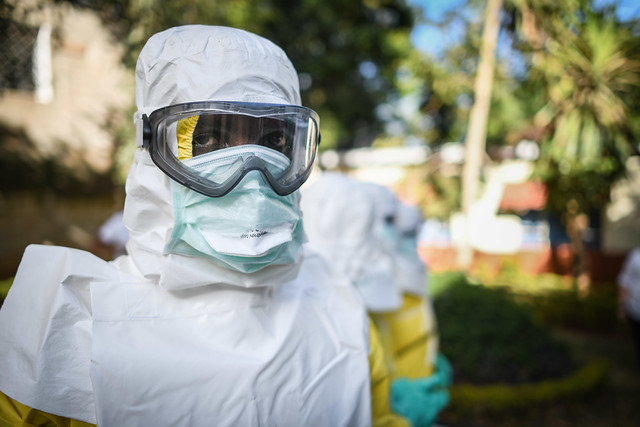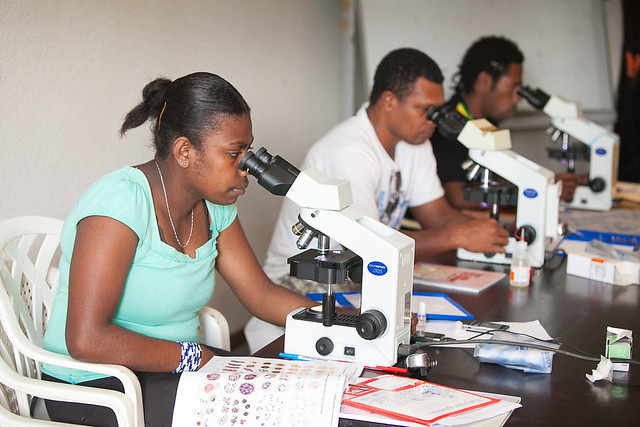‘We are not prepared for the threat of a fast-moving respiratory pandemic that could spread across the globe within 36 hours and eventually kill up to 80 million people.’
These chilling words called for action in a recent annual report on global preparedness for health emergencies by the Global Preparedness Monitoring Board (GPMB), an independent group of 15 experts convened by the World Bank and WHO after the first Ebola crisis. The report said that “all parts of society and the international community have made progress in preparing to face health emergencies” but also cautions that “current efforts remain grossly insufficient” 1.
History of pandemics
Pandemics have occurred throughout human history, the deadliest probably being the Bubonic plague, also known as the ‘Black Death’, that killed between 75 to 200 million people between 1347 and 1350, and the so-called ‘Spanish Flu’, that infected an estimated 500 million people worldwide in 1918, 10% of which died as a result 2. The risk of rapid spread of infectious diseases across national borders is however at an all-time high today, due to the ever-increasing pace of globalisation and international travel.

Epidemics in the 21st century
In the first two decades of the 21st century alone, we have had outbreaks of Severe Acute Respiratory Syndrome (SARS), meningitis, chikungunya, influenza, cholera, measles, Middle East Respiratory Syndrome (MERS), Ebola, Zika, and yellow fever which has spread across different countries 2.
In addition to tragic levels of mortality and morbidity, a pandemic could cause widespread panic, destabilise national security (due to increasing looting and violence), destroy already fragile health systems, and seriously impact the global economy and trade.
Low-and Middle-Income Countries are paying the highest price
Low-and Middle-Income Countries (LMICs) are at the same time more at risk of outbreaks and would bear the highest costs in case of a widespread pandemic. They are at higher risk for a number of reasons: countries in the tropics are at more at risk of vector-borne diseases such as dengue and malaria because mosquitoes and other insect vectors thrive in these regions. Many LMICs are also at higher risk of zoonotic disease because of common farming practices such as keeping chickens and pigs in backyards, and lastly, these countries often have weak health systems and are less prepared to prevent or swiftly detect or respond to outbreaks 2.
All of this means that, in the event of a large epidemic, the human costs for LMICs would be catastrophic. It is estimated for example that if a pandemic like the 1918 Spanish Flu were to hit today, 96% of the deaths would be in LMICs 2. A pandemic of this sort would likely undo decades of development efforts.
So what does the report suggest?
In the face of such a gloomy scenario, the recent GPMB report urges countries, regional and multilateral institutions to:
- Commit to preparedness by implementing their binding obligations under the International Health Regulations [(IHR (2005)] 6 prioritising and dedicating sufficient domestic resources and recurrent spending for preparedness.
- Lead by example by following through on their political and funding commitments for preparedness and agreeing to routinely monitor progress.
- Build strong systems and to prioritise community involvement in all preparedness efforts, building trust and engaging multiple stakeholders.
- Be prepared for the worst by ensuring adequate investment in developing vaccines and therapeutics, broad-spectrum antivirals and other appropriate non-pharmaceutical interventions.
- Link preparedness with financial risk planning. Funding replenishments of the International Development Association (IDA), The Global Fund and Gavi should include explicit commitments regarding preparedness.
- Create incentives and increase funding for preparedness for the poorest and most vulnerable countries to “close financing gaps for their national actions plans for health security as a joint responsibility and a global public good”.
- Strengthen coordination mechanisms through the United Nations under the leadership of WHO to mobilise the wider national, regional and international community since the earlier stages of an outbreak 1.

The role of evaluation in strengthening Global Health Security
Itad, as a leading provider of monitoring, evaluation and learning services across multiple thematic areas including Public Health and Global Health Security, is providing strategic advice to some of the key players currently involved in efforts to increase LMICs’ capacity to prevent, detect and respond to disease outbreaks of any size and nature. The box below presents a few examples. This work supports interventions so that they can maximise their contribution to their intended impact and be even more effective in building capacity to respond to the next big pandemic.
While we can only anticipate to a limited extent where and when an outbreak that could cause the next big pandemic may occur, based on our experience in the sector, we agree with the GPMB report in that national, regional and international institutions should continue to work together and invest resources to ensure that the world is adequately prepared to detect and respond to the next outbreak, whenever that will occur. This requires deep thinking about how change occurs in a complex, ever more closely connected world, where one actor’s interventions may be necessary but are unlikely to be sufficient to affect the changes necessary in the time we have left. Evaluators in this field have a big role to produce and communicate insights, analysis and suggestions in a robust, timely and useful way so that interventions to contribute to Global Health Security efforts are as efficient, effective and equitable as they could possibly be.
Itad’s work in strengthening Global Health Security
- Itad is currently playing a role as third party monitoring and evaluation agent of Public Health England’s IHR Strengthening Programme which aims to build health system capacity in a number of countries in Africa and Asia 8. The programme aims to improve global health security by supporting and strengthening national and regional (supra-national) health protection systems. By strengthening these systems, they are more able to prevent or detect, and respond to public health threats before they become potential cross-border emergencies reportable under the International Health Regulations (IHR) 2005. At key learning moments in the evaluation, Itad is bringing together stakeholders to reflect on how, why and to what extent the supported interventions are addressing the problems they were designed to combat, and contributing to wider strengthening of the use of evidence for decision-making. In addition to this internal learning function, we will also support key decisions at key such as upcoming HMG spending reviews and provide learning for the wider sector.
- Itad has also been contracted to conduct a performance evaluation and ongoing independent monitoring to support programme delivery for the UK Public Health Rapid Support Team (UK-PHRST), or what Bill Gates has referred to as “a heroic supergroup of scientists who deploy to outbreak zones to help local governments stop infectious diseases” 9. The UK-PHRST is a consortium formed of Public Health England and the London School of Hygiene & Tropical Medicine, with the University of Oxford and King’s College London as academic partners. Funded by UK Aid from the Department of Health and Social Care (DHSC), the UK-PHRST supports low- and middle-income countries’ ability to investigate and respond to disease outbreaks. Since November 2016, it has responded to over ten requests from organisations such as WHO GOARN to support responses to disease outbreaks including the ongoing Ebola outbreak in the Democratic Republic of Congo. As an external partner, our role is to provide a critical and constructive review of programme delivery, recommend improvements, evaluate results and complement the UK-PHRST’s internal monitoring processes.
- Given that the increase in drug-resistant bacteria can make disease outbreaks more difficult to control and can increase the burden on health systems, tackling antimicrobial resistance (AMR) is, of course, crucial to preparedness as well. In 2016 Itad was contracted by DHSC to be the Fleming Fund Independent Evaluation Supplier. The Fleming Fund 10 is a £265 million One Health programme, to support LMICs in tackling AMR to prevent a potential ‘Drugmageddon’ that could cause 10 million deaths globally per year by 2050 11 . To that end, the Fleming Fund support countries generating the data they need to inform policies and practices which will optimise the use of antimicrobial medicines. Itad’s role is to assess the Fund’s plausible contribution to changes in policy, regulations, attitude and practice around the use of antibiotics, through the generation of more and higher quality data on AMR. We also provide learning at key stages during the evaluation, to support adaptive management and inform decision-making for this and AMR programmes.
- Itad is also very much involved in supporting donors’ efforts to build strong and resilient health systems, which increase the likelihood of preventing, detecting and successfully responding to any epidemic. In 2017, for instance, Itad was asked to conduct a Formative Evaluation of UNICEF’s approach to Health Systems Strengthening. The evaluation examined two separate but inter-related domains of UNICEF’s engagement in HSS – namely, how UNICEF as an organization is supporting the changes sought in its approach, and how program implementation is supporting HSS at country level. The findings and recommendations put forth by the evaluation aimed to influence strategic direction and partnerships/advocacy as well as programme strategies to achieve the results and targets outlined in UNICEF’s Health Strategy 2016-30.

